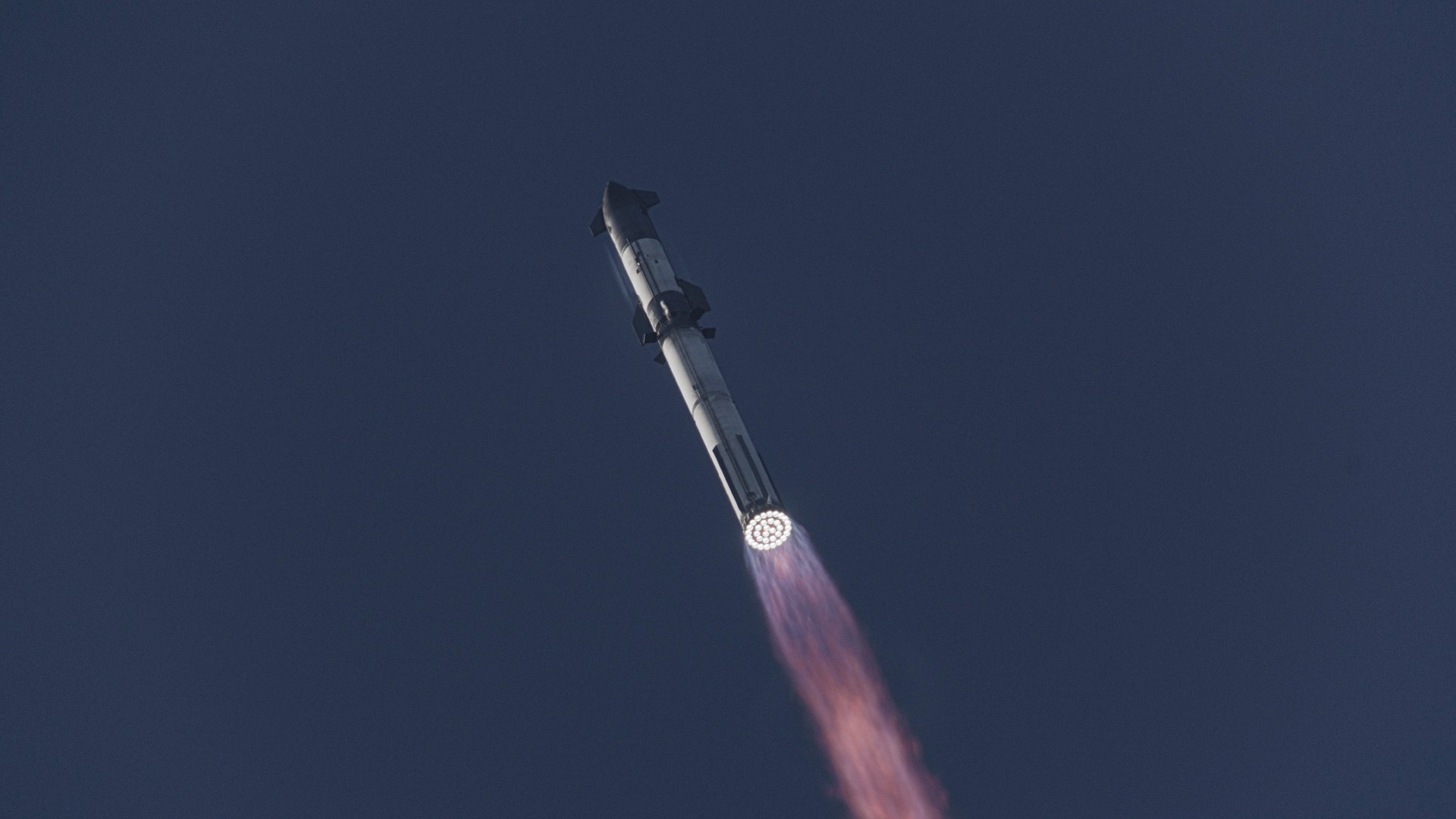
The third flight of SpaceX's giant Starship vehicle may be considerably more ambitious and complex than the first two.
The coming mission could involve a refueling test, according to a recent presentation by Lakiesha Hawkins, deputy associate administrator for NASA's Moon to Mars program office.
Hawkins spoke on Monday (Dec. 4) about the agency's infrastructure and technology programs with a committee of the U.S. National Academies of Sciences, Engineering and Medicine. One of her slides noted that SpaceX recently launched the second-ever Starship mission and stated that the company is "moving quickly" toward the third, "which will include a propellant transfer demonstration."
Hawkins did not read those words aloud or discuss the planned refueling trial during the meeting, however, and NASA has since walked the statement back a bit: An agency spokesperson told CNBC that "no final decisions on timing have been made." (You can see Hawkins' presentation here; the highlighted slide appears at the 120-minute mark.)
Related: SpaceX's 2nd Starship launch test looks amazing in these stunning photos and videos
Both NASA and SpaceX view off-Earth propellant transfer as a key enabler of bold exploration feats, such as the establishment of crewed outposts on the moon and Mars. Rockets and spacecraft burn through most of their fuel just to get out of Earth's deep gravity well, so they'll need to top off their tanks to journey to other solar system destinations.
And a Starship refueling test has been in the offing for a while now. In October 2020, NASA awarded SpaceX $53 million to conduct such a trial in Earth orbit. The contract calls for SpaceX to transfer 11 tons (10 metric tons) of liquid oxygen between tanks inside a Starship vehicle. (Starship's Raptor engines run on supercold liquid oxygen and liquid methane.)
That's a step toward the envisioned operational strategy, which will involve voyaging Starship vehicles rendezvousing with "tanker" variants in Earth orbit.
NASA has a keen interest in the development of Starship, SpaceX's next-generation deep-space transportation system. The agency selected Starship to be the first crewed lunar lander for its Artemis program, which aims to establish a permanent, sustainable human presence on and around the moon by the end of the 2020s.
If all goes according to plan, Starship will land astronauts near the moon's south pole for the first time in late 2025 or 2026, on the Artemis 3 mission. But a lot has to go right for NASA and SpaceX to meet that deadline.
Starship has just two launches under its belt to date, test missions that lifted off in April and November of this year. Both flights aimed to send the vehicle's upper stage most of the way around the world, from SpaceX's Starbase site in South Texas to a patch of the Pacific Ocean near Hawaii.
Neither test flight hit that mark. On the debut mission, Starship's two stages failed to separate as planned, and SpaceX detonated the vehicle intentionally about four minutes after launch. Last month's mission went more smoothly, notching key milestones such as successful stage separation, but it too ended early; Starship's upper stage exploded eight minutes after liftoff.
It's unclear when Starship's third flight will occur. The vehicle should be ready soon, SpaceX founder and CEO Elon Musk has said, but technical hurdles aren't the only ones the company must overcome. SpaceX still must secure a launch license from the U.S. Federal Aviation Administration, which is overseeing an investigation into what happened during last month's launch.







